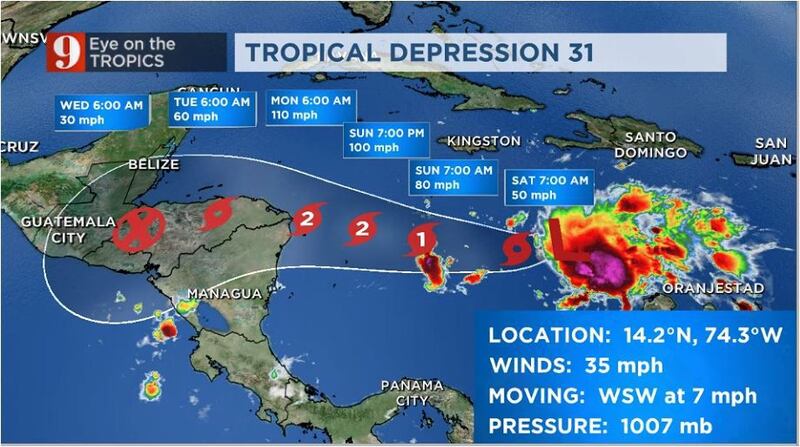ORLANDO, Fla. — Tropical Storm Fay made landfall just north-northeast of Atlantic City, New Jersey on Friday afternoon. Heavy rains and winds will continue to affect New York, New Jersey, Connecticut and New England, as Fay picks up speed and moves northward overnight and Saturday.
Tropical Storm Fay became the 6th named storm of the season, setting records as the earliest “F” storm to develop so early in a season. Fay is expected to weaken, but it will continue to bring torrential rainfall over parts of the North East that had flash flooding earlier this week.
>> CLICK HERE FOR LIVE DOPPLER 9 RADAR <<
Central Florida’s Forecast: High heat indices, storm chance to close off the week
IMPACTS TO THE NORTHEAST
Many parts of eastern Pennsylvania and New Jersey had torrential rains earlier this week, the ground is already saturated and Fay is expected to produce 2 to 4 inches of rain with isolated amounts that could reach 7 inches along and near the track from the lower Maryland Eastern Shore and Delaware northward into New Jersey, eastern Pennsylvania, southeast New York, and southern New England. Flash floods may occur. Flood watches have been posted for several areas along the northeastern U.S.
Although strong winds are not the major impact that Fay will cause, there could be some wind gusts above 50 mph, which can knock trees down, causing power outages across parts of the Mid-Atlantic, but more toward the New Jersey, New York, New England states.
From Delaware to New Jersey, New York, and Connecticut there is a tropical storm warning in effect. A tropical storm warning means that tropical storm conditions will arrive within 36 hours.
Absolutely pouring in Ocean City. Flash flood warning in effect. pic.twitter.com/L62qAdll30
— Katherine Scott (@KScott6abc) July 10, 2020
Read: Forecasters highly confident about an active 2020 Hurricane Season
Nota en español: Temporada de Huracanes 2020: Pronosticadores altamente confiados en una temporada activa
Storm surge is possible in areas that are under the tropical storm warning.
Isolated tornadoes are possible today over portions of New Jersey, southeast New York, and southern New England as Fay continues to move northward and it is expected to increase forward speed (to the north) overnight, while its center barrels over eastern New York, western Massachusetts and Vermont. By Saturday afternoon, Fay will likely have lost much of its strength and be a tropical depression as it enters Canada.
We will continue to monitor Fay’s evolution and bring you the latest on WFTV.com, our newscasts, and on our free WFTV Weather app.
Saharan Dust coming to Central Florida: What is it? What does it do?
HOW’S THE REST OF THE ATLANTIC BASIN?
The rest of the basin is quiet. There is another plume of thick Saharan dust exiting African which has reached the Lesser Antilles and will continue to move westward. Saharan dust suppresses tropical storm formation. We expect the Atlantic and Caribbean regions to remain quiet for the rest of the week and into the weekend.
We will continue to monitor this situation and bring you the latest on WFTV.com, our newscasts, and on our free WFTV Weather app.
DOWNLOAD OUR FREE WFTV WEATHER APP TO RECEIVE ALERTS
Entérese del pronóstico del tiempo, en español, por nuestra meteoróloga Irene Sans
Follow our Severe Weather team on Twitter for live updates:
- Chief meteorologist Tom Terry
- Brian Shields
- Irene Sans
- Kassandra Crimi
- George Waldenberger
- Rusty McCranie
© 2020 Cox Media Group







